How to Eat Ramen for Foreign Tourists 1
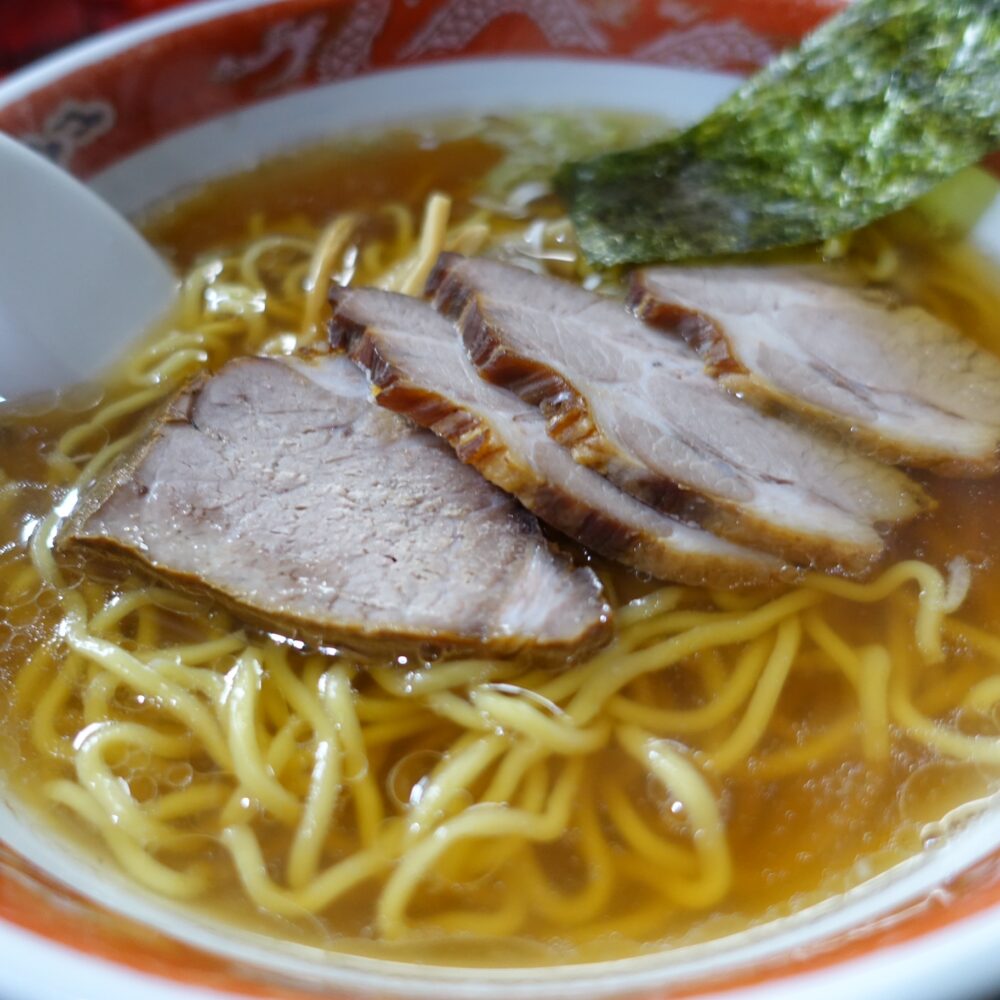
Table of Contents
1. Introduction
2. Classification of Ramen
2-1. Shoyu (Soy Sauce) Ramen
2-2. Shio (Salt flavored) Ramen
2-3. Miso Ramen
2-4. Tonkotsu (Pork bone) ramen
2-5. Tori-Paitan Ramen (Whitish chicken bone soup)
2-6. Tsukemen
2-7. Abura Soba
3. Toppings
4. How to order ramen
5. Ramen consumption ranking and local specialty ramen in top cities
1. Introduction
Japanese ramen is one of the most popular dishes for foreign travelers. According to the Japan Tourism Agency’s Survey of Foreign Visitor Consumption Trends in Japan (2019), meat dishes ranked first (26.7%) and ramen second (19.3%) as the most satisfying food and drink, confirming its popularity. Sushi (15.6%) and fish (12.6%) came in third and fourth, respectively.
As you know, ramen has its roots in the noodle cuisine of mainland China. It is said that noodle dishes from the Chinese mainland were introduced to Japan after the opening of ports in the late Edo period (Shimoda and Hakodate in 1854). Since then, ramen has evolved in various ways, with each restaurant adding its unique Japanese arrangement to the dish.
I am a ramen lover, eating about 100 ramen a year. I would like to comment on ramen from various perspectives so that foreign visitors can enjoy more delicious ramen in Japan.

In particular, the “how to order ramen” described in Part 4 of the third part of this article will be useful for foreign travelers who cannot read Japanese. According to Tabelog, one of the largest gourmet food websites in Japan, only 0.9% of all ramen restaurants in Japan have English menus.
Furthermore, the last item in the third part, “Ramen consumption ranking and local specialty ramen in top cities,” introduces cities with unexpectedly high ramen popularity. Cities with high ramen popularity are likely to have a variety of local specialty ramen restaurants that are more delicious and unique.
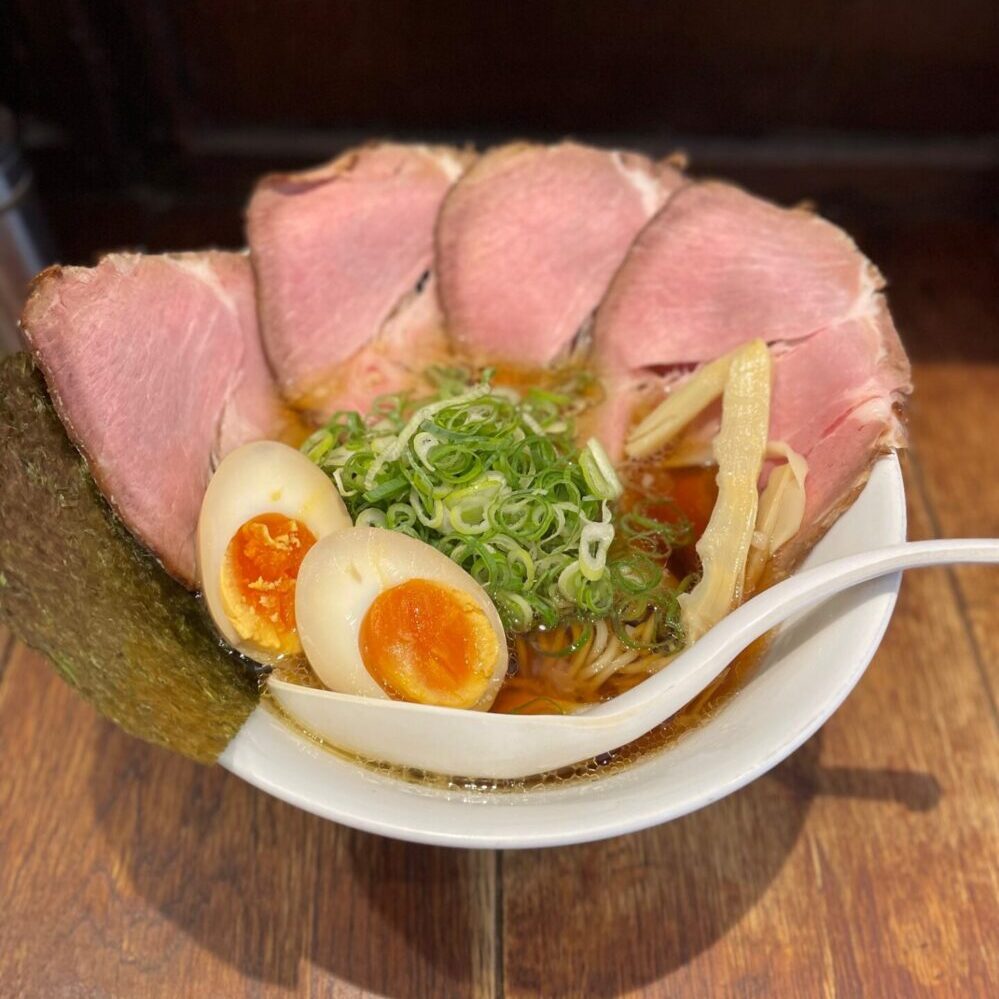
2. Classification of Ramen
Ramen can be broadly categorized into soy sauce ramen, shio ramen, miso ramen, tonkotsu (Pork bone) ramen, tori-paitan ramen (whitish chicken bone soup), tsukemen, abura soba, and others. In recent years, various types of ramen have emerged, such as niboshi ramen (dried small sardines soup), ago dashi ramen (dried flying fish soup), seafood tonkotsu ramen, and tonkotsu shoyu ramen. In this issue, we will comment on seven typical types of ramen.
2-1. Shoyu (Soy Sauce) Ramen
Shoyu ramen originated in 1910 when it was offered by Rairai-ken in Asakusa. Along with shio ramen, shoyu ramen has the longest history of any ramen in Japan. Shoyu ramen soup is made by simmering various ingredients, such as chicken stock, and finishing it with a dark soy sauce.
Pepper or black pepper goes well with shoyu ramen. Vinegar can also be added to shoyu ramen to give it a sour taste and a different flavor in a single bowl of ramen. I like adding vinegar to shoyu ramen, but since taste preferences vary from person to person, I recommend adding a small amount of vinegar at first to see how it tastes.
Soy Sauce Ramen (Konpiraso, Yamagata Prefecture)
 |
Soy Sauce Ramen (Ramen Maruhira, Hokkaido)
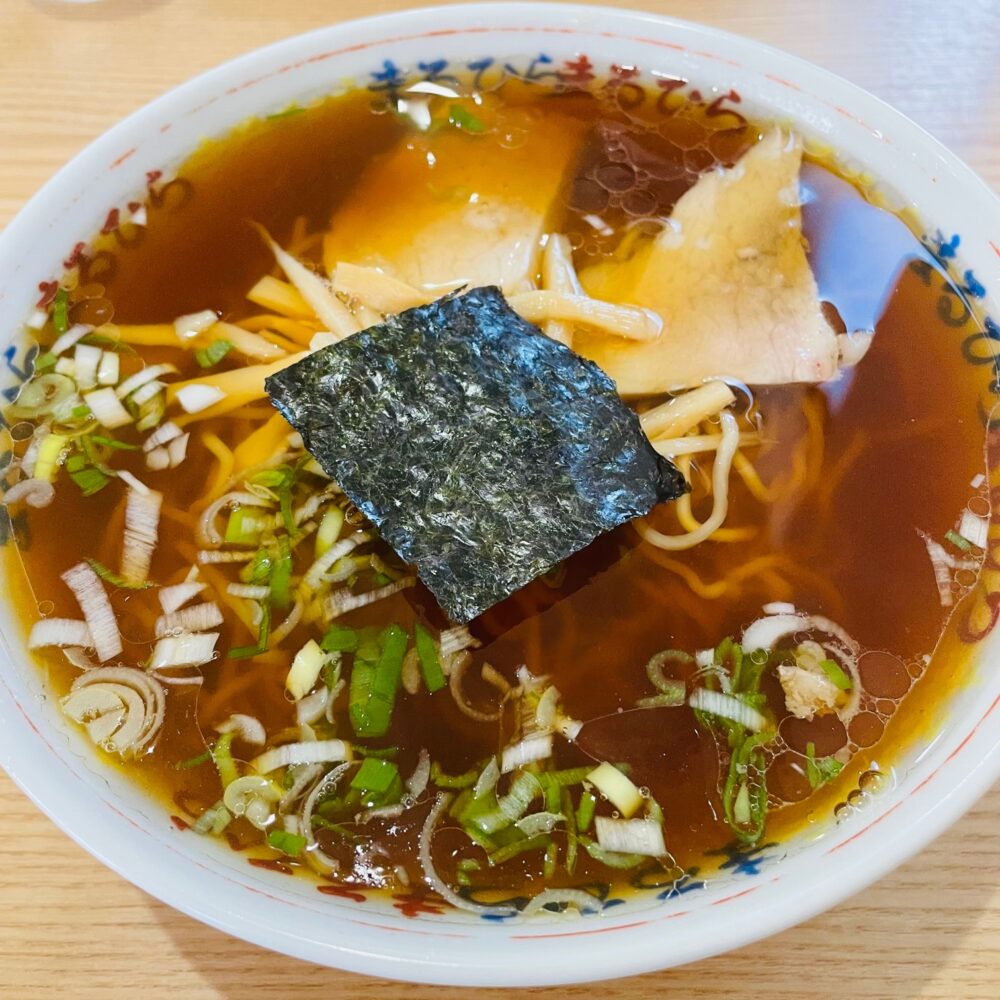 |
Soy Sauce Ramen (Ramen Daishi, Tokyo)
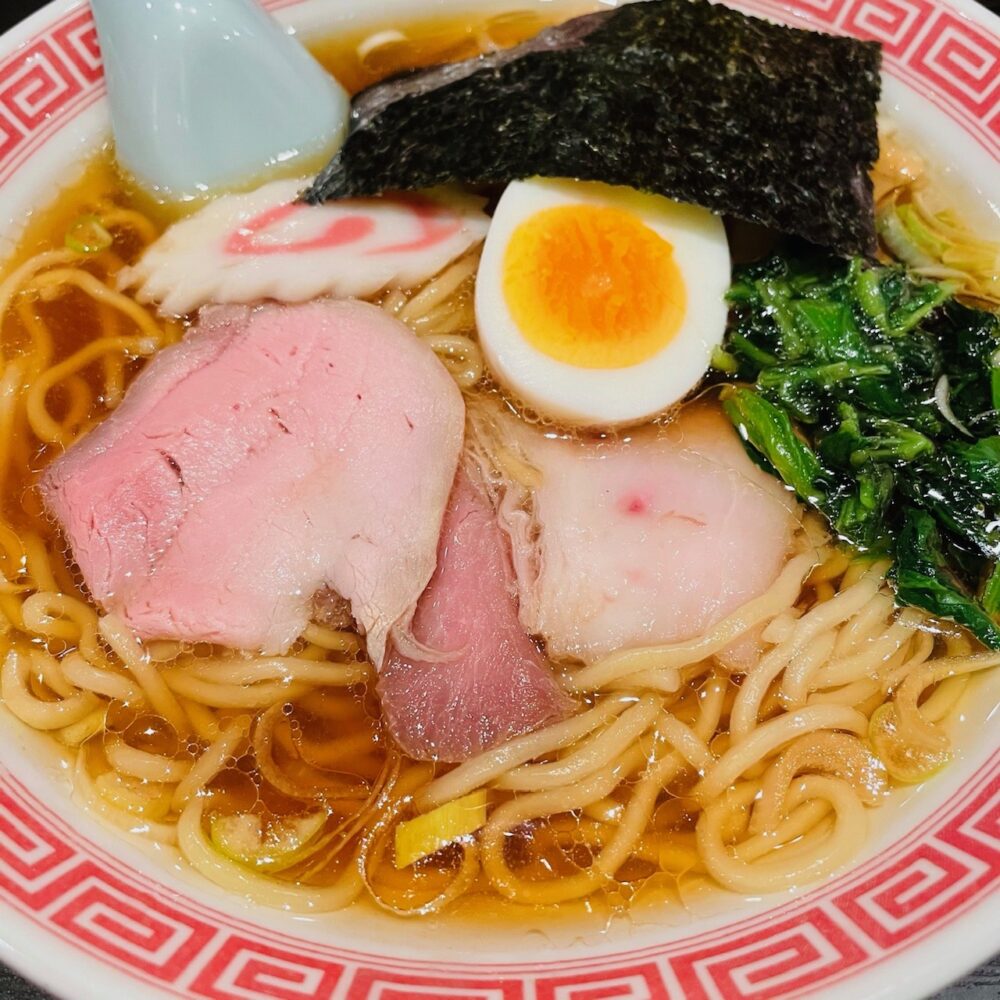 |
Pork cha shu pork, ajitama (seasoned egg), and menma (pickled bamboo shoots) are also good toppings for shoyu ramen. For vegetables, chopped green onions and boiled spinach go well with ramen.
Local specialty ramen” includes Asahikawa ramen (Hokkaido), Kitakata ramen (Fukushima Prefecture), Shirakawa ramen (Fukushima Prefecture), Stamina ramen (Ibaraki Prefecture), Sano ramen (Tochigi Prefecture), Hachioji ramen (Tokyo), all of which are soy sauce ramen.
Soy Sauce Ramen (Asahikawa ramen Aoba, Hokkaido)
 |
The aforementioned niboshi ramen, ago dashi ramen, and tonkotsu shoyu ramen are also derivatives of shoyu ramen. Shoyu ramen is usually a light soup. On the other hand, tonkotsu shoyu ramen such as Ie-Kei Ramen (Kanagawa Prefecture) and Tsubame-Sanjo Back Fat Ramen (Niigata Prefecture) have a richer soup.
Niboshi Ramen (Fukuryu Ramen Wadachi, Tokyo)
 |
2-2. Shio (Salt flavored) Ramen
Like soy sauce ramen, shio ramen has a long history. It is said that shio ramen originated in 1884 when “Yowaken” in Hakodate offered Nankin-soba (Chinese soba). Shio ramen soup is made by boiling various ingredients such, as chicken stock, and finishing with a salt sauce. It is characterized by its clear, transparent soup.
Shio Ramen (Menya Sou, Tokyo)
 |
Compared to shoyu ramen, shio ramen is less likely to develop into a derivative form combined with seafood or pork bones. Fewer ramen stores offer it than other ramen. However, it is very tasty ramen with a light flavor that even older people find hard to stomach.
Hakodate ramen (Hokkaido) is the most famous shio ramen, “local specialty ramen,” in Japan. However, there are not many shio ramens, “local specialty ramen” in Japan. Tanmen, a type of ramen with a large number of vegetables, such as cabbage and bean sprouts, also originated in Japan and is a derivative of shio ramen.
Chicken cha shu pork, pickled bamboo shoots, and stir-fried vegetables are often used as toppings for shio ramen. Unlike other ramen, chicken cha shu pork, not pork, goes well with this dish.
Shio Ramen (Ajisai, Hokkaido)
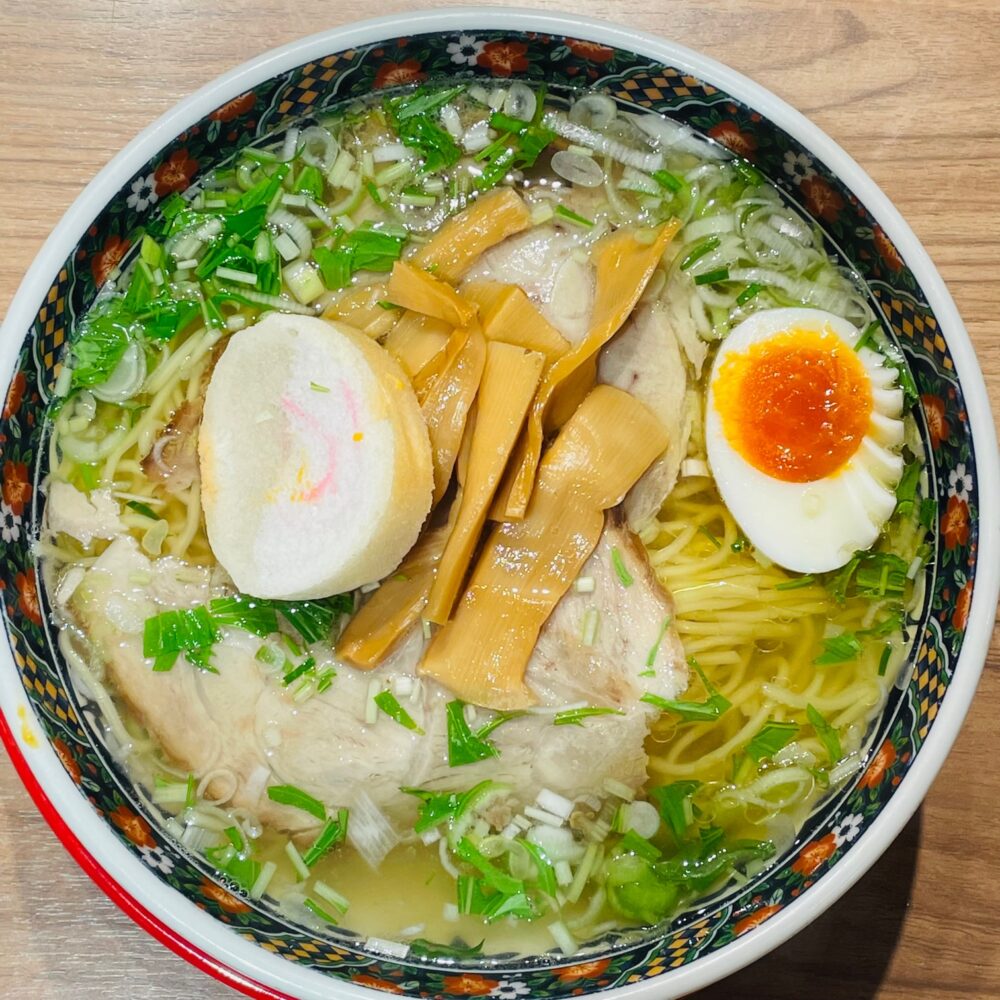 |
Tanmen (Shuei, Tokyo)
 |
2-3. Miso Ramen
Unlike shoyu ramen and shio ramen, which have a long history, miso ramen is a recent development, having been developed in 1955 by Aji no Sanpei, a popular diner in Sapporo, Hokkaido. It is sometimes referred to as “Sapporo Miso Ramen. It is a Japanese-Chinese blend of ramen that combines miso, a traditional Japanese seasoning, and Chinese noodles.
Toppings that go well with miso ramen include pork cha shu pork, ajitama (seasoned eggs), menma (pickled bamboo shoots), and garlic. Stir-fried vegetables such as cabbage and bean sprouts also go well with them. Corn, butter, and other toppings originating from Hokkaido are also characteristic. In addition to pepper, hot sauce, and chili peppers also go well.
Miso Ramen (Sapporo Junren, Hokkaido)
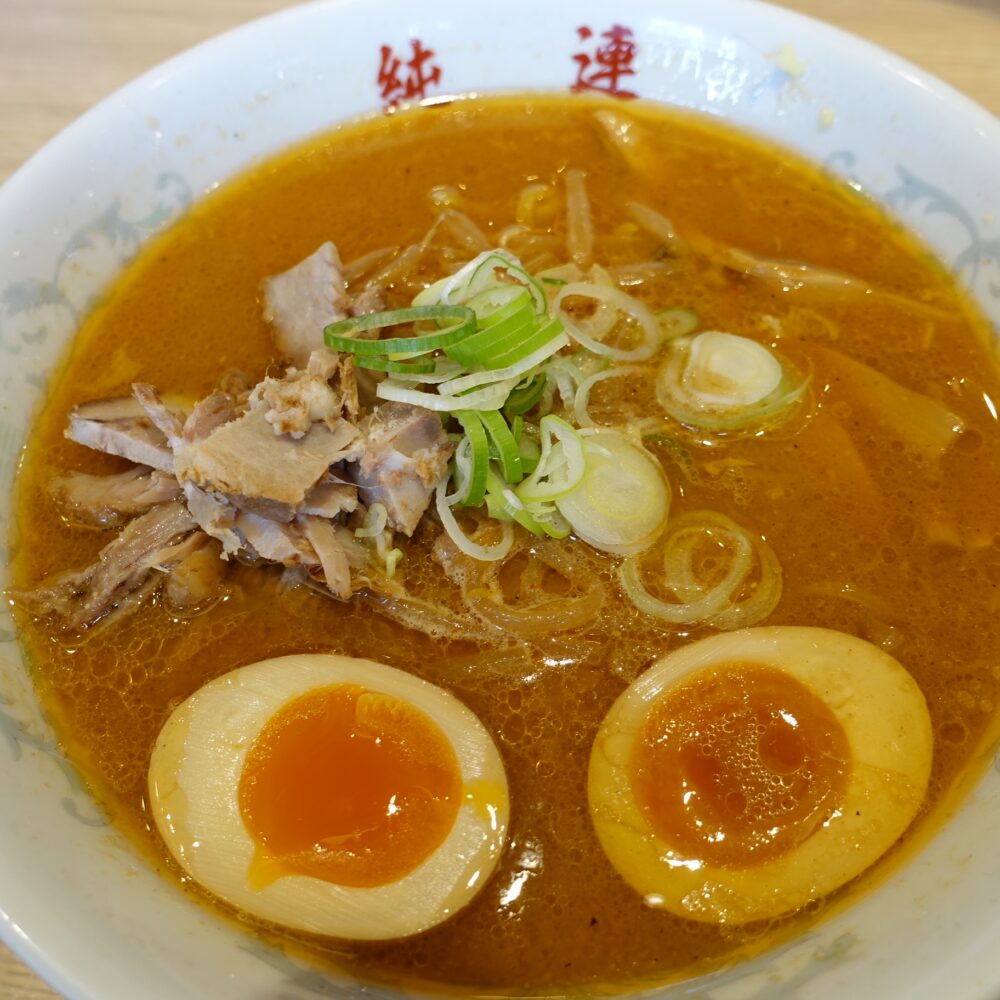 |
Miso Ramen (Menya Yukikaze, Hokkaido)
 |
Local specialty ramen” includes Sapporo ramen (where it originated), miso curry milk ramen (Aomori Prefecture), and Akayu ramen (Yamagata Prefecture). Akayu ramen is a derivative of miso ramen topped with spicy miso and is called spicy miso ramen.
Miso ramen is year-round ramen, but its origin in the cold region of Sapporo gives the impression that it is ramen that people want to eat during cold weather. Miso is said to increase metabolism and warm the body.
Miso Curry Milk Ramen (Onishi, Aomori Prefecture)
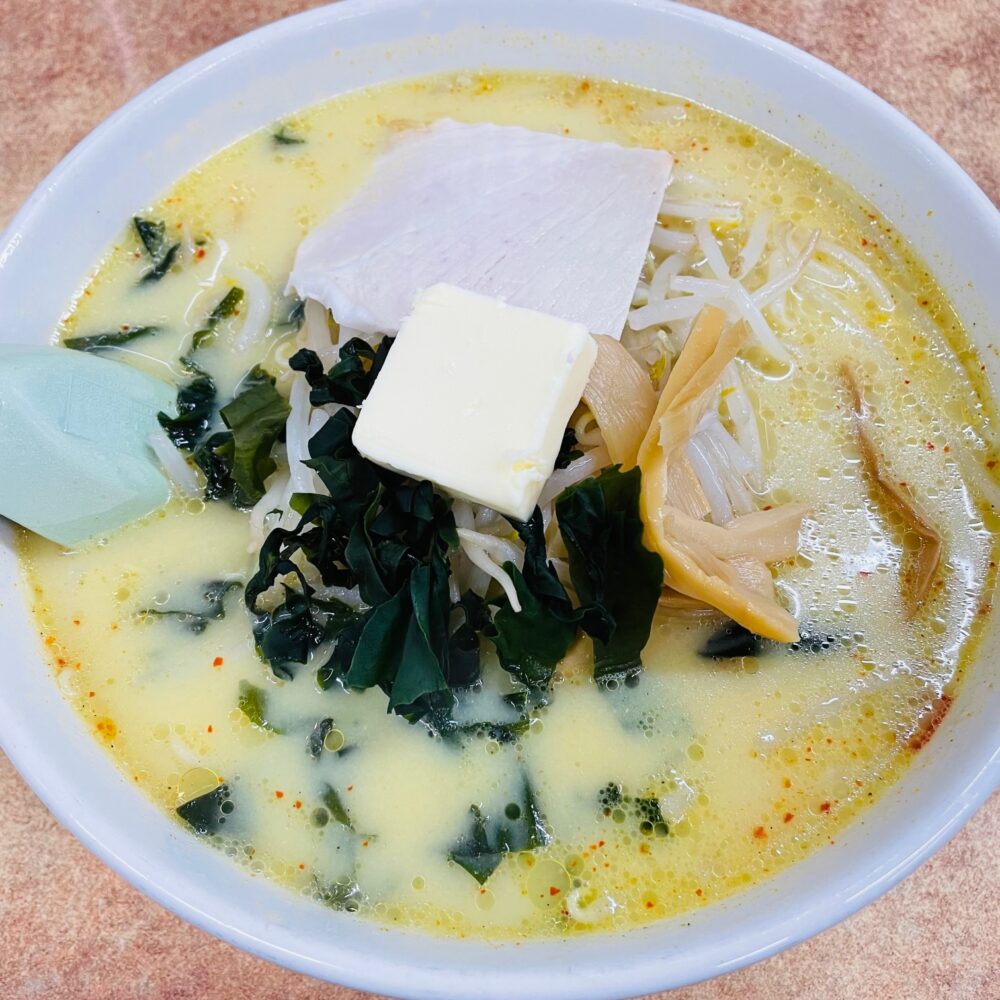 |